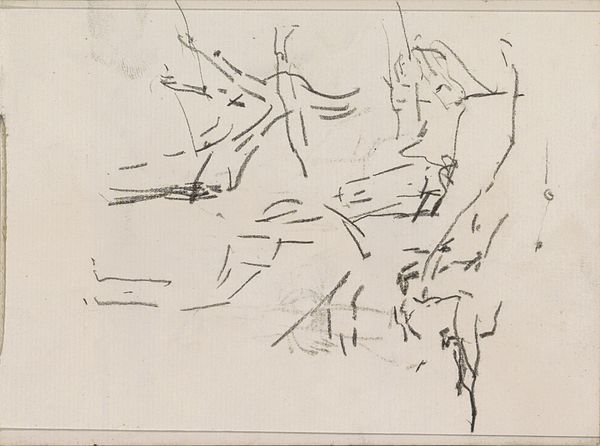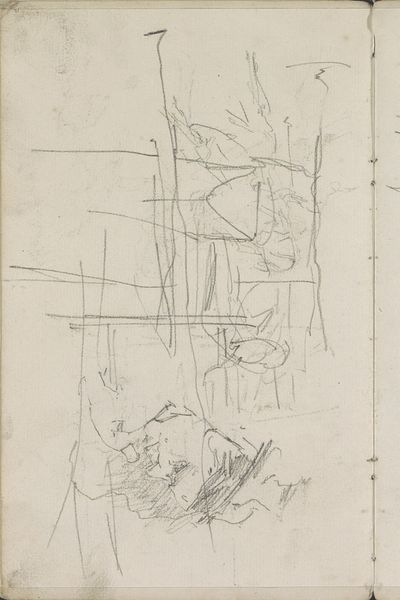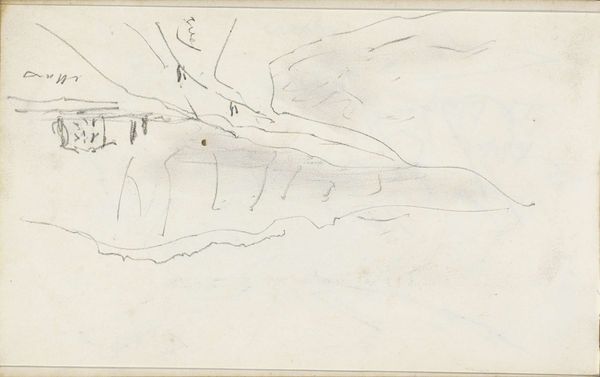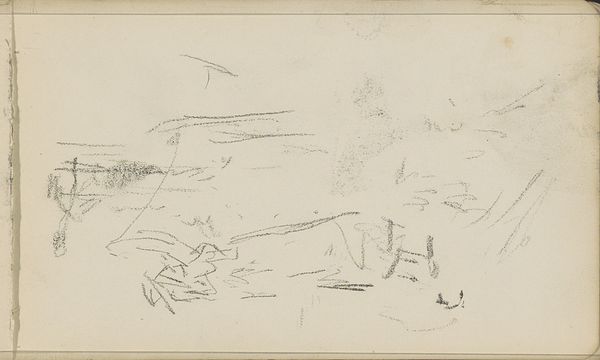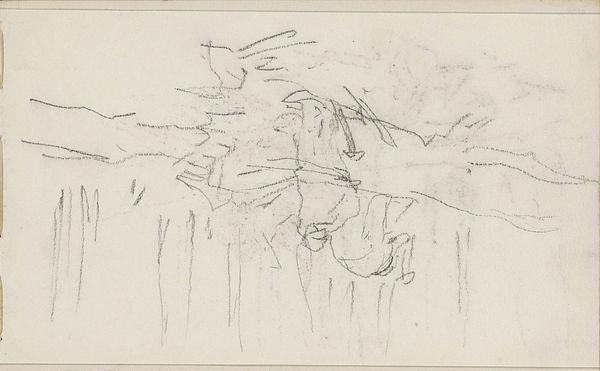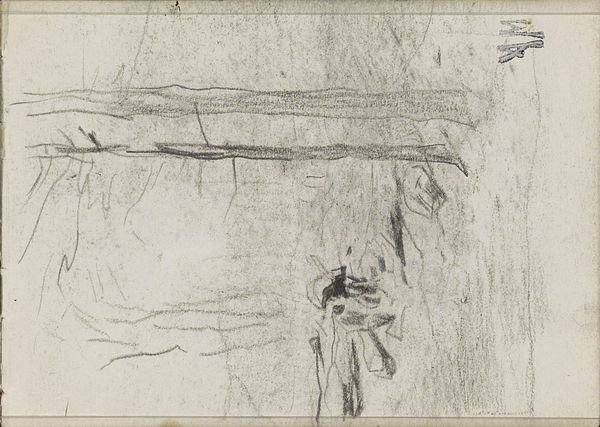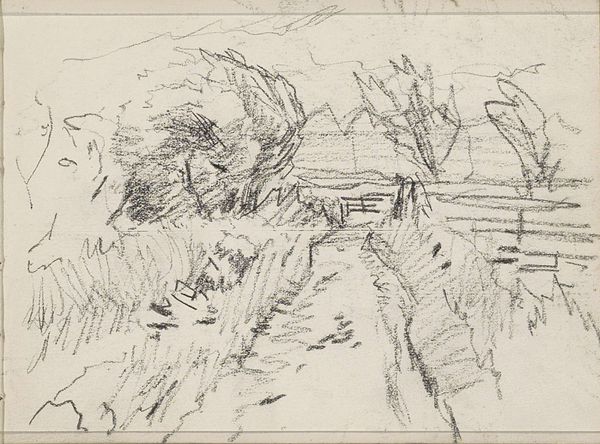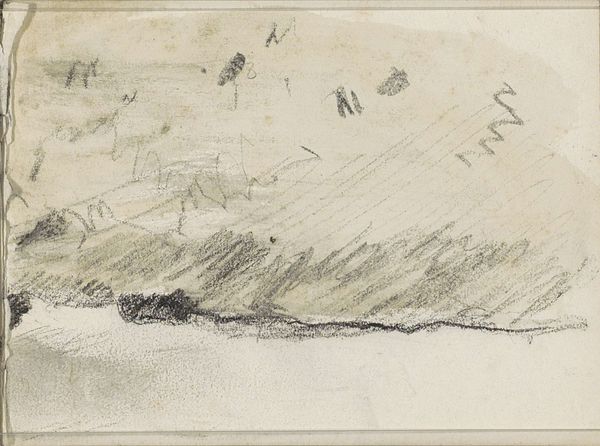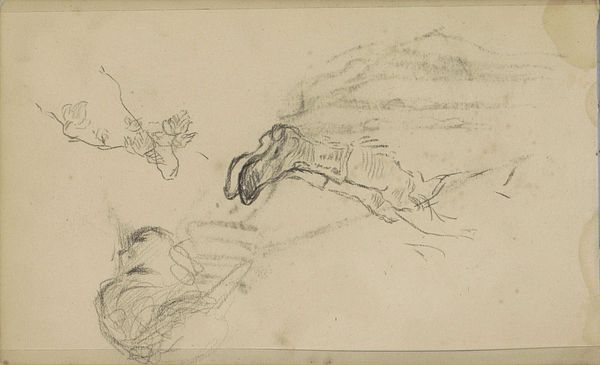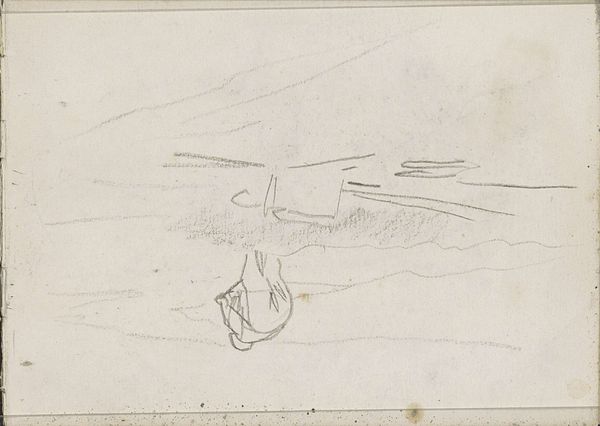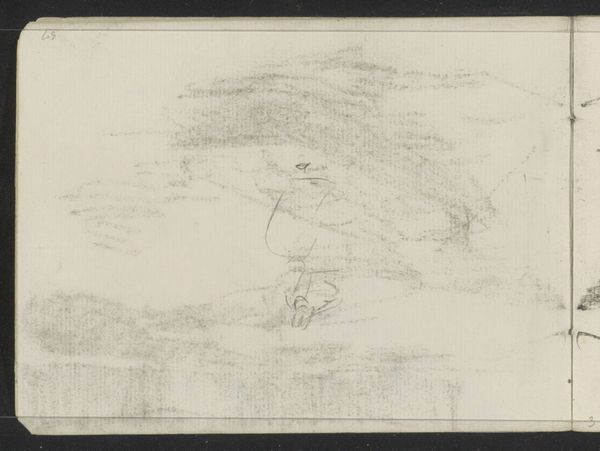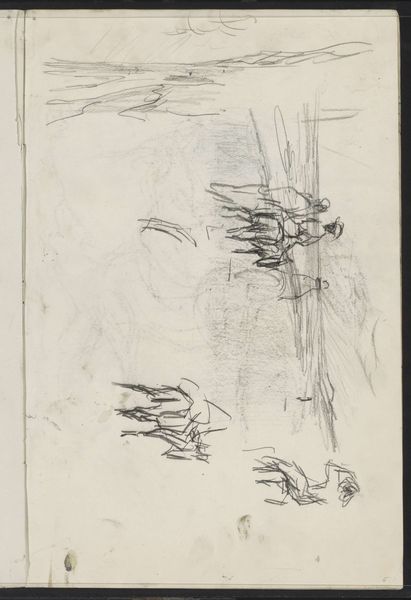
Copyright: Rijks Museum: Open Domain
Editor: This is "Studieblad," a landscape drawing made with pencil by Isaac Israels around 1886 to 1903, and it’s currently held at the Rijksmuseum. The strokes seem almost hurried, capturing just the essence of the scene. What do you see in this piece, beyond just the landscape elements? Curator: I see the potential for resistance against the dominant artistic norms of the late 19th century. Israels, as an impressionist, was inherently challenging the rigid academic styles. But beyond that, think about the act of sketching itself – a fleeting, almost clandestine moment of observation. It's about capturing a subjective impression rather than striving for objective representation, right? What could that mean in the context of broader social changes and power dynamics at that time? Editor: So, the 'unfinished' quality is itself a kind of statement? Curator: Precisely! The sketch becomes a space of freedom, where the artist can explore and question. It defies expectations of polish and completion that were often imposed by institutions. Think about who had the power to define what "good" art was, and who was excluded. Editor: That's a fascinating point. I hadn't considered the act of sketching as potentially subversive. It feels relevant today as a way to sidestep traditional artistic gatekeepers. Curator: It’s a direct visual expression of someone’s gaze without any refinement or modification that institutions demanded. It mirrors the emerging voices pushing against established social orders. How can we relate these subtle artistic choices to wider questions of identity and representation, especially in a world still grappling with those issues? Editor: I'll definitely look at these drawings with fresh eyes from now on. Thank you, that perspective really brought new life into this artwork. Curator: Likewise! It's exciting to find so many layers of potential within what might seem like a quick sketch.
Comments
No comments
Be the first to comment and join the conversation on the ultimate creative platform.
